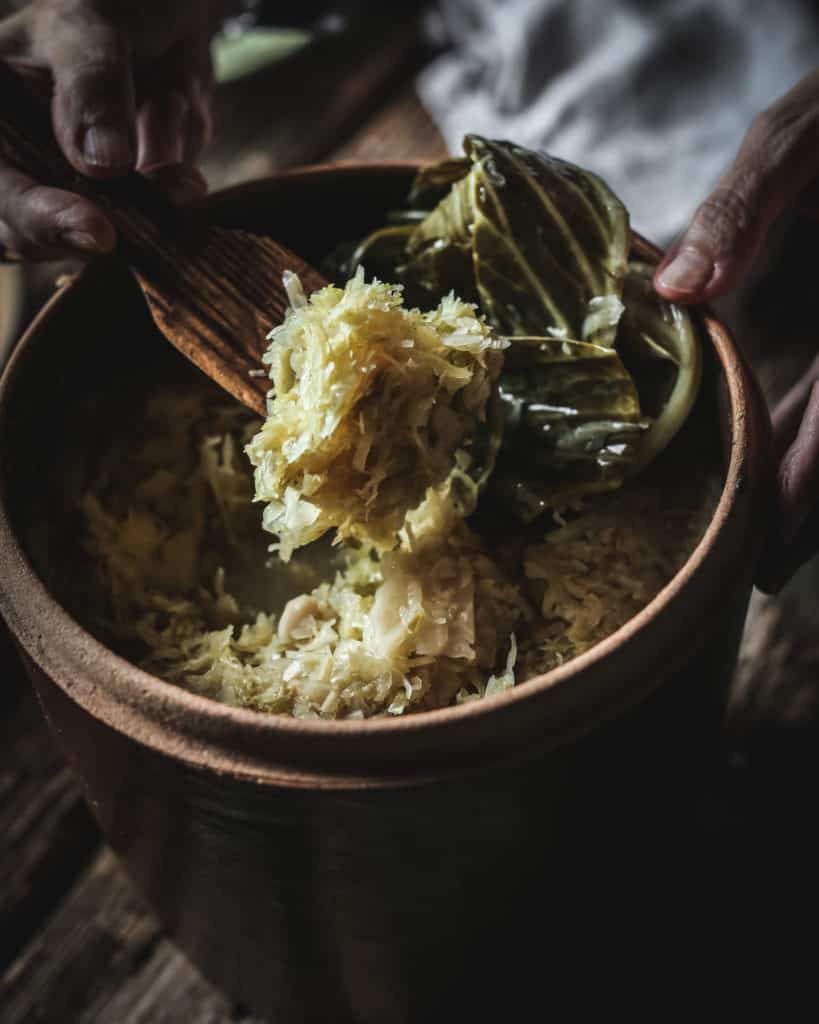
Maybe a Homemade Sauerkraut recipe seems out of place on a food blog dedicated to Tex-Mex food traditions, but you have to remember that 20% of the Texas population was German during most of the 20th century. Czech and Polish traditions figure into our food heritage as well – we love our beer, we love our accordion music and we love picnic tacos made with Polish kielbasa and jalapeños. We are mixed up and proud of it!
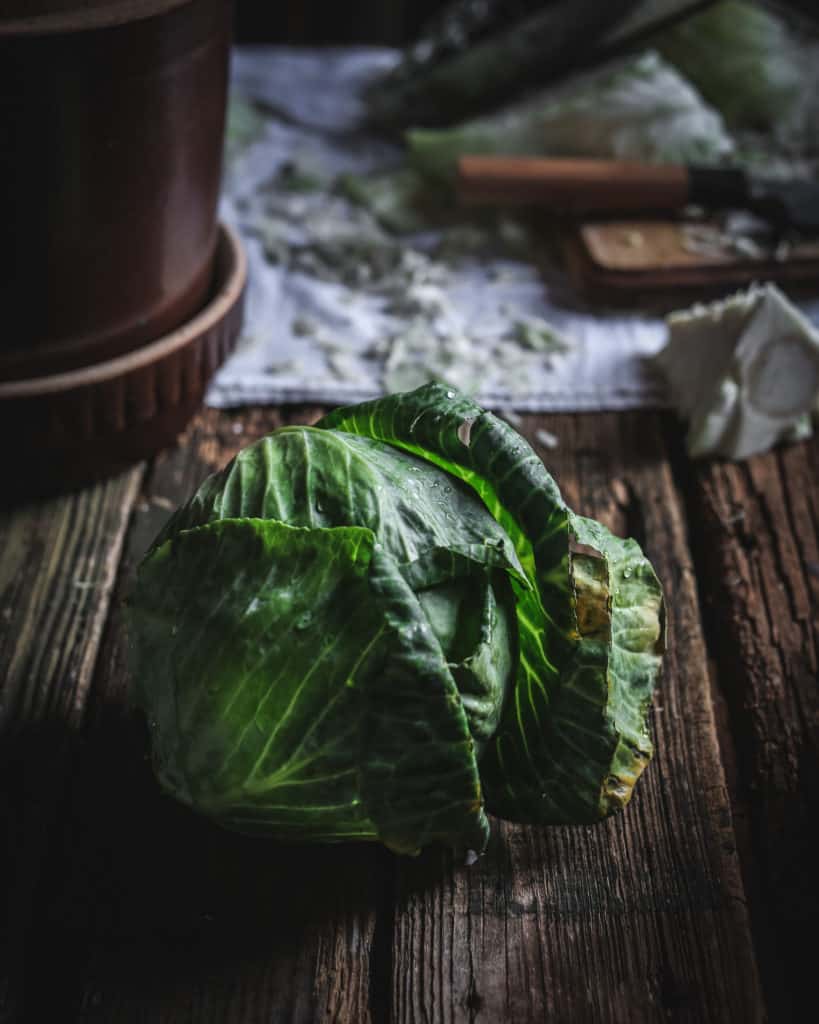
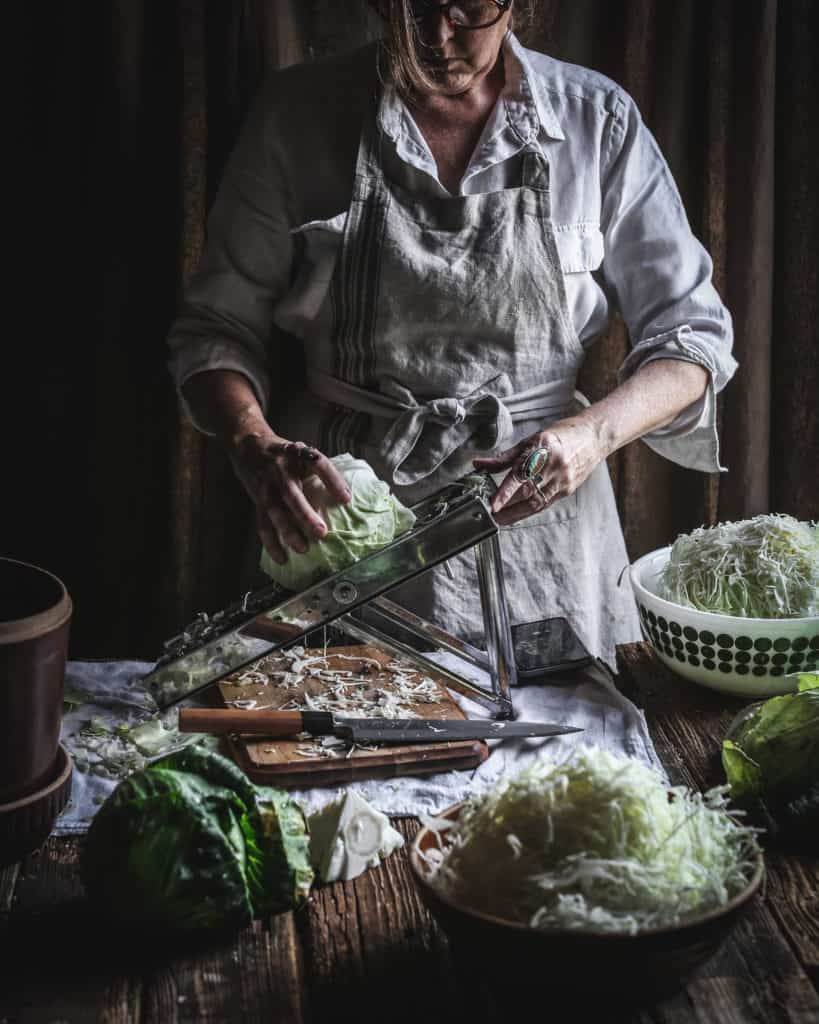
Fermenting Crocks for Homemade Sauerkraut
Fermenting foods is a trend at the moment, but the early German settlers brought their fermenting crocks with them to start their new lives in Texas back in the 1850’s. Sauerkraut is finely shredded cabbage that is packed into a jar and allowed to ferment for several weeks. It’s sharp flavor makes Homemade Sauerkraut an excellent condiment, but for summer hot dogs, sauerkraut beats the pants off of ketchup. So delicious!
Before making any fermented food, you need a container that is large enough to hold what you are fermenting. Most sauerkraut recipes make a big batch, so find a large ceramic or glass jar with a lid.
When I was visiting Prague in the Czech Republic, I found an earthenware pickling crock that I knew had been used for making Homemade Sauerkraut. I lugged it all the way back to Texas, and yes, now I have one arm longer than the other (not really.)
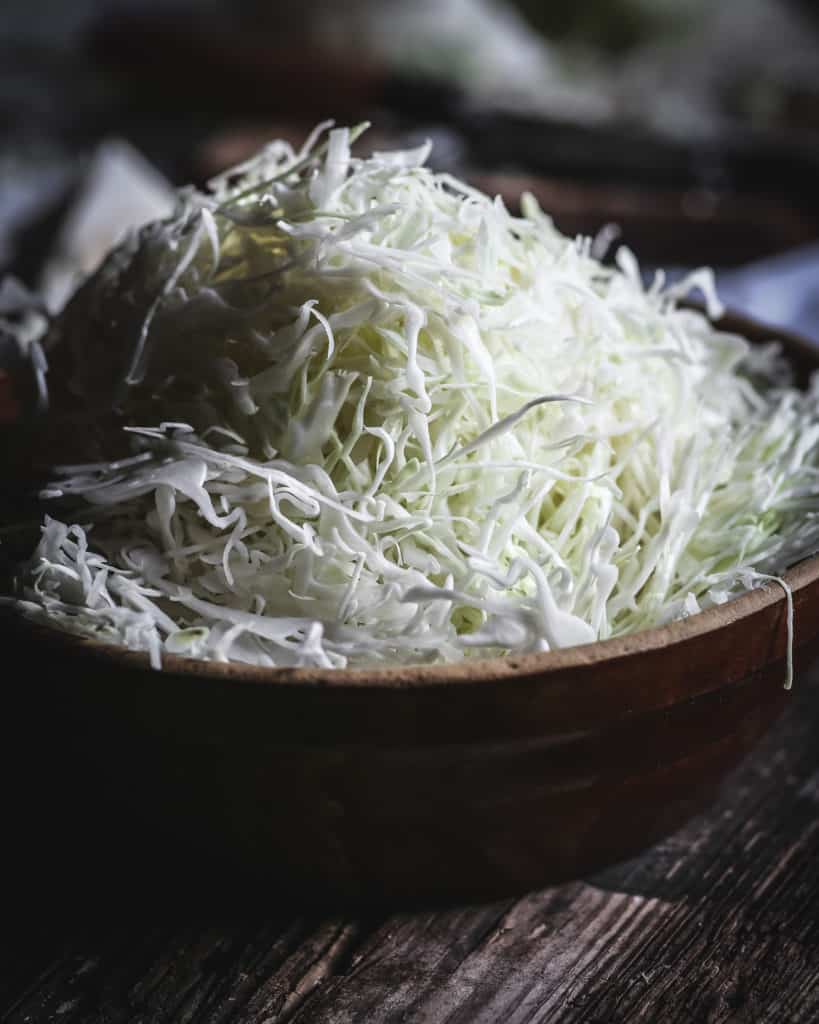
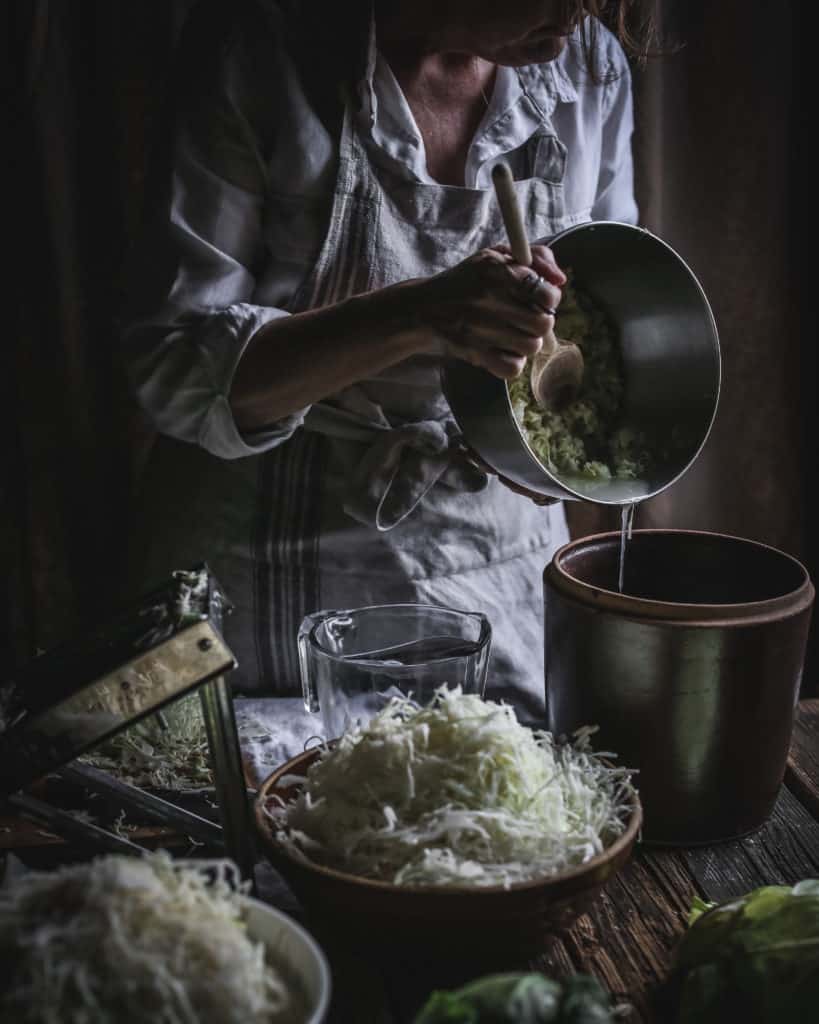
Three Types of Fermenting Crocks
There are three types of fermenting crocks to consider:
- Low-tech earthenware crock – the carbon dioxide simply escapes from under the lid. Equally, airborne dust and bacteria, not to mention bugs, could enter the same way. This is the type of crock I have, although mine is vintage and did not come with ceramic weights. I improvised a weight for my crock with some garden stones that I washed several times and santized with a chlorine rinse. (see photo)
- Glass Canning Jar – A jar with a lid that seals would be ideal, such as the lid of a glass canning jar. BUT (very big but) you MUST remember to release the carbon dioxide. If you don’t remember to release the carbon dioxide, the lid may burst.
- Valve fermenting jar kits – these have a built in valve for releasing the carbon dioxide that naturally accumulated during the fermentation process, but the jars are rather small for the traditionally large size batch of Homemade Sauerkraut. But, you can opt to fill multiple small jars instead of one large jar.
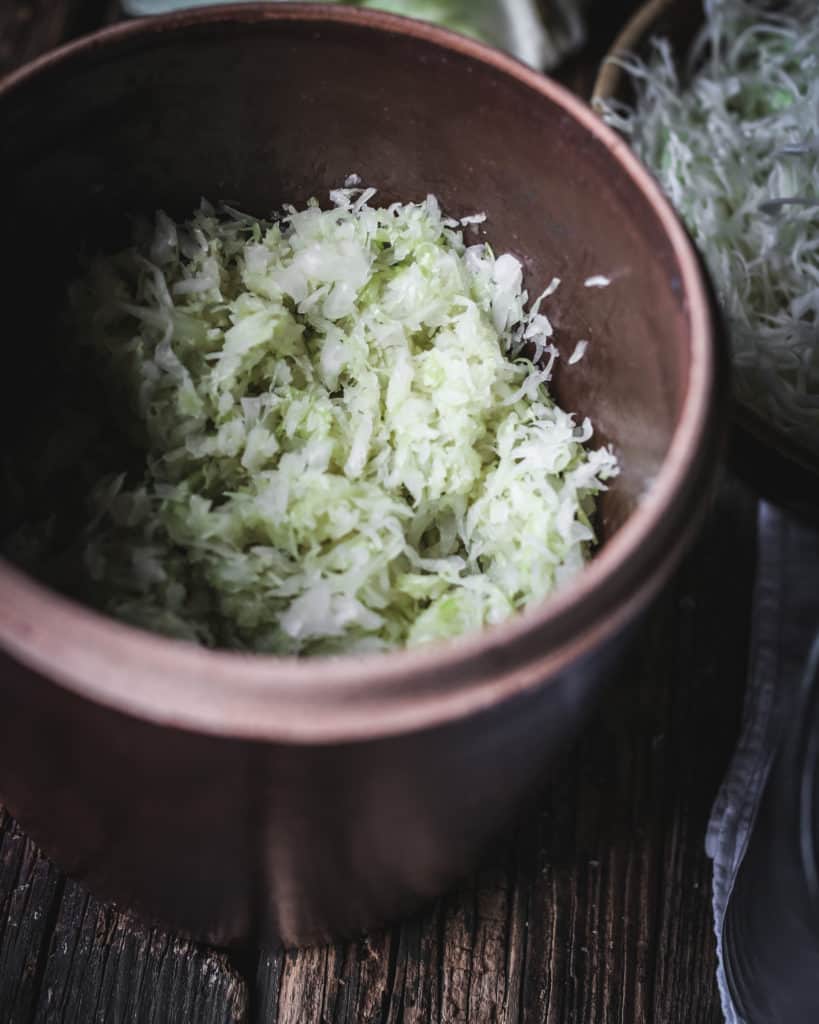
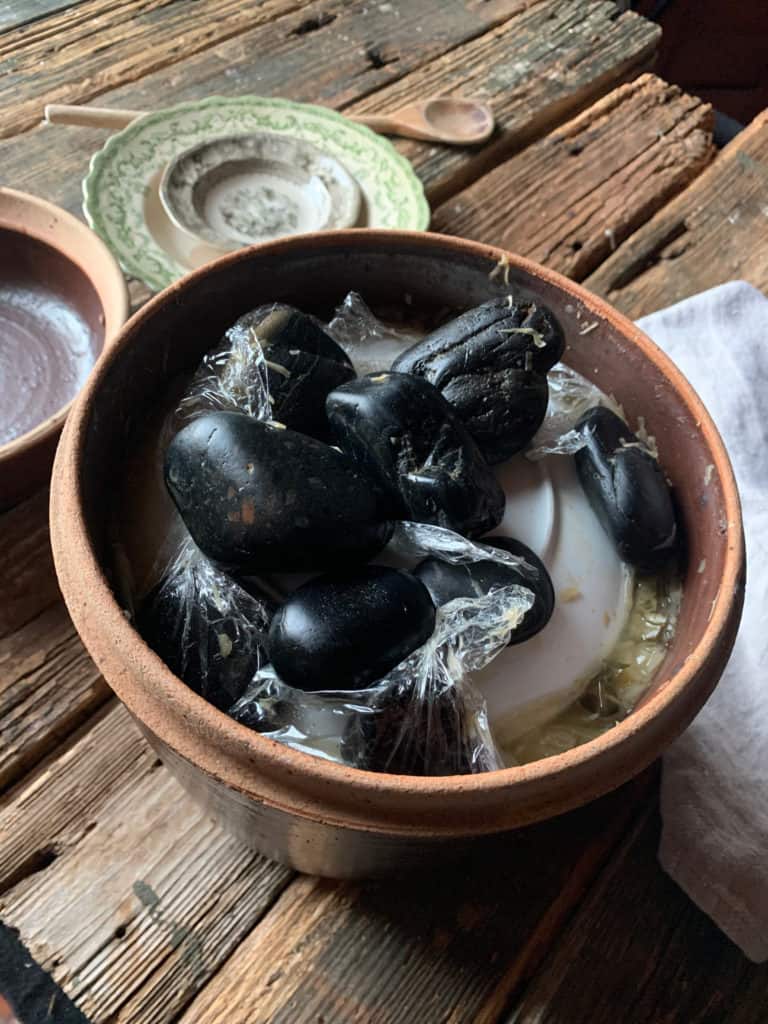
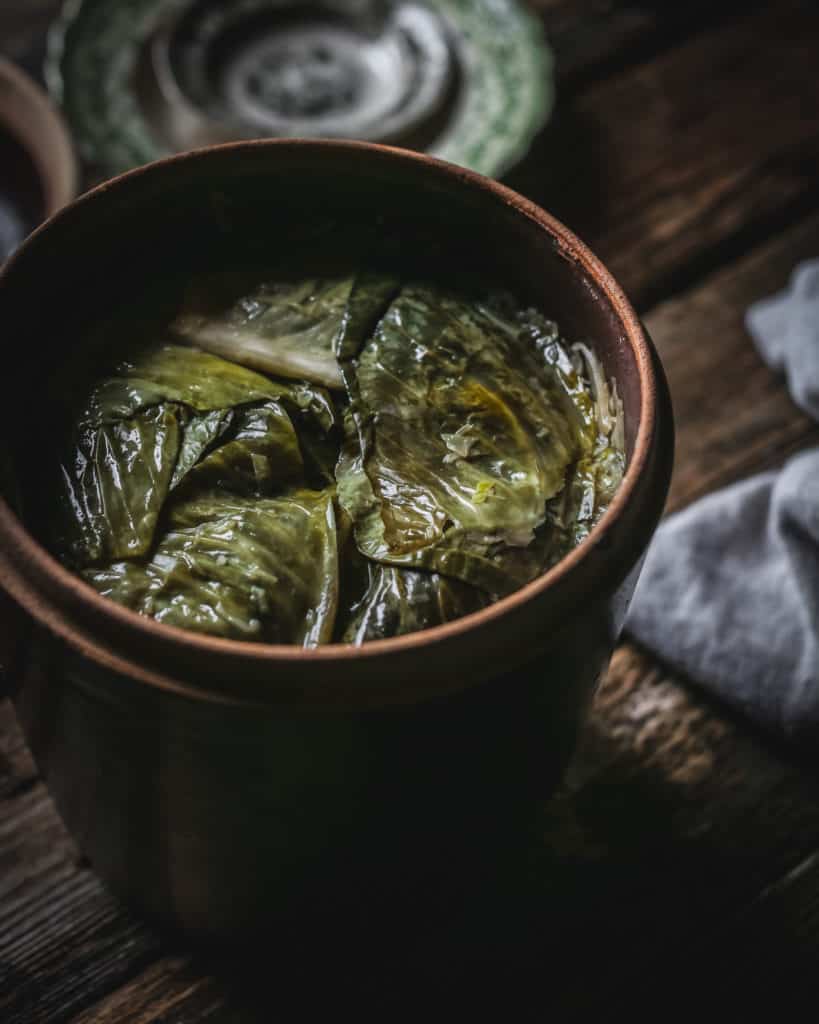
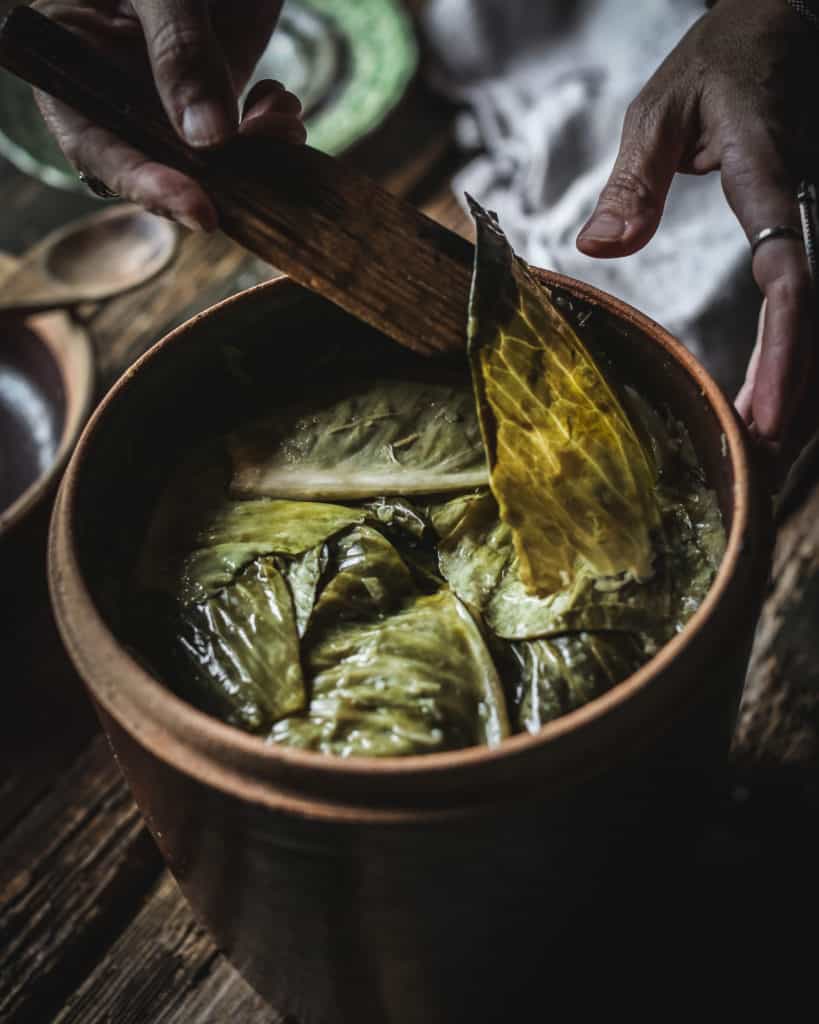
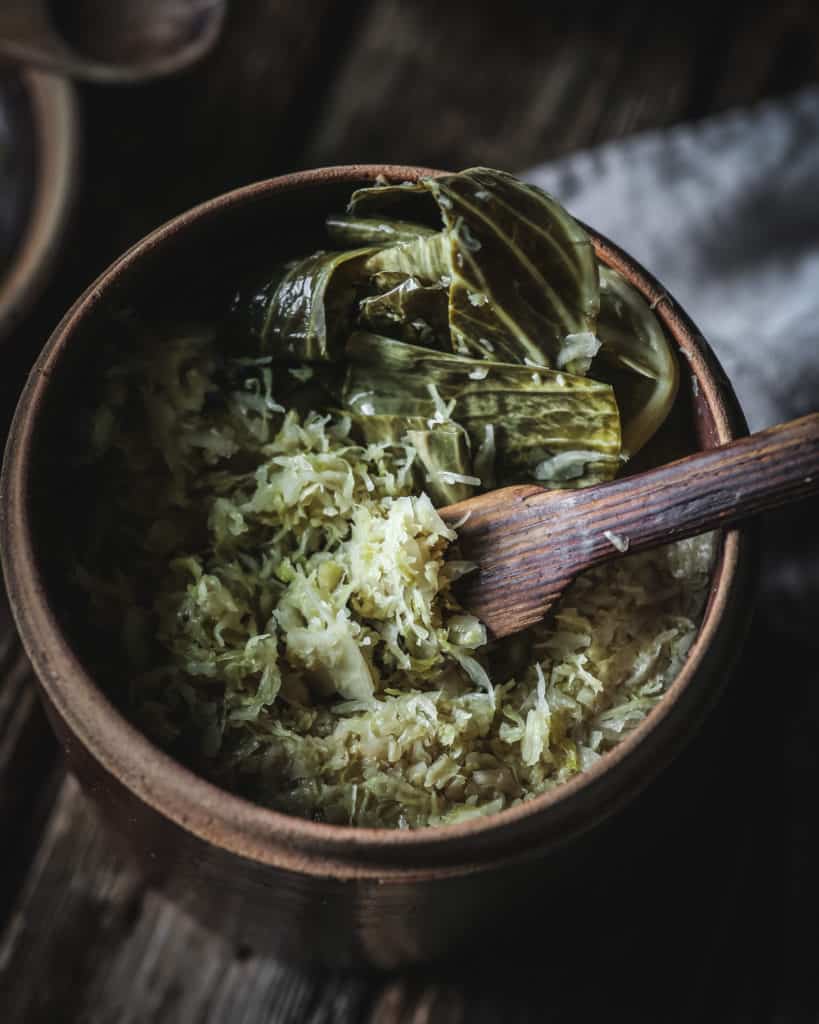
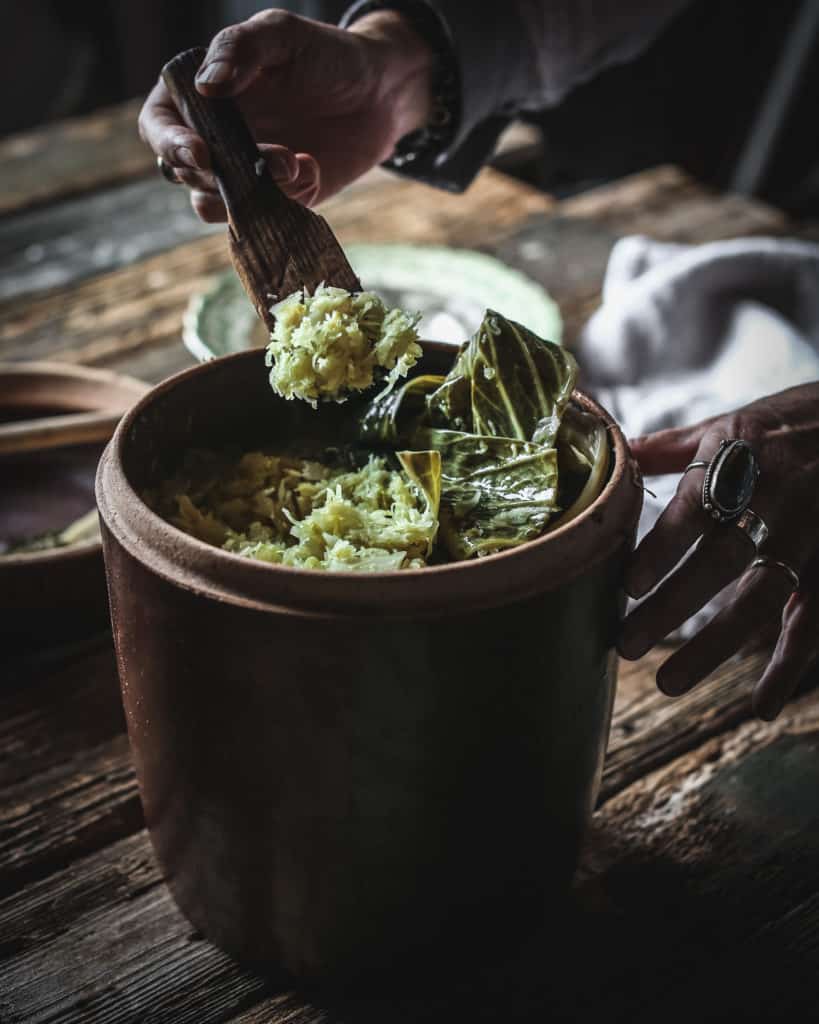
Homemade Sauerkraut
- Prep Time: 1 hour
- Cook Time: 2 weeks
- Total Time: 337 hours
- Yield: 5lbs (2.5 kg) 1x
- Category: Side
- Method: Fermenting
- Cuisine: Eastern European
Instructions
Wash and core the cabbage. Remove the outer leaves, but reserve the leaves for the fermenting crock.
Cut the cabbage heads in half. Using a mandoline slicer shred the cabbage as finely as possible.
Fill the bowl of an electric mixer with as much cabbage as will fit. Add. 1 tbsp. (12g) of pickling salt to the bowl with the cabbage, and lock down the mixing head. Mix the cabbage on the lowest speed so that the shreds bruise and release liquid. Mix for 10 minutes. Pour the contents of the mixing bowl into the pickling crock. Continue until all of the cabbage has been mixed, salted and packed into the pickling crock.
Press the cabbage shreds down into the crock so that they are submerged in liquid. Place the whole leaf of cabbage over the top, covering the shreds completely. Tuck the edges of the cabbage down around the interior wall of the crock to form a seal. Press the leaves gently so that they are submerged in the liquid.
Place a ceramic weight or an improvised weight (see my improvised weight in photo above) on top and cover.
Allow the crock to rest for 2 weeks at room temperature so that the sauerkraut ferments. Once the fermentation time has passed, transfer the sauerkraut into smaller containers for storage in the refrigerator.
Best used within 90 days.

Leave a Reply